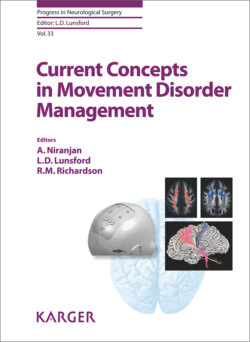Читать книгу Current Concepts in Movement Disorder Management - Группа авторов - Страница 47
Secondary Parkinsonism
ОглавлениеDrug-induced Parkinsonism (DIP) is the most common secondary cause of Parkinsonism. It is estimated to occur in 15% of patients on long-term antipsychotic therapy [9], and older age is a predictor of risk. The list of medications associated with DIP is long but the most common offenders include anti-psychotics, gastric motility agents such as metoclopramide, valproic acid, and certain calcium channel blockers. Both typical and atypical antipsychotics can cause DIP but the antipsychotics with the most potent dopamine D2 receptor blocking properties carry the highest risk. In DIP, the motor symptoms tend to present symmetrically and involve less tremor and gait disturbance than idiopathic PD; however, it may cause a clinical syndrome indistinguishable from PD. The Parkinsonian symptoms usually develop within days to weeks after starting the drug, but may be delayed by several months or manifest in a dose-dependent fashion. The optimum treatment is the discontinuation of the offending agent, but in the rare case when this is not feasible, anticholinergics, amantadine or levodopa may be tried, with variable success. Withdrawal of the offending agent usually results in the resolution of Parkinsonism, typically within several weeks. However, in a substantial minority of patients, the symptoms persist or progress. There are also cases of full symptom remission after discontinuation of the drug, only to reappear later. Evidence from clinical and functional imaging studies suggest that patients with enduring symptoms represent cases of preclinical PD unmasked by medication [10].
Vascular Parkinsonism is another common mimicker of idiopathic PD. Neuroimaging findings of subcortical ischemia support the clinical diagnosis. The onset of Parkinsonism may be relatively acute, after infarction in basal ganglia-related pathways, but more typically the onset is insidious in the setting of symmetric periventricular white matter small vessel disease. Vascular Parkinsonism tends to present more with lower body involvement, manifesting as gait disturbance (shuffling, freezing) and falls, and less with tremor or asymmetry than PD. Accompanying features such as dementia and corticospinal findings may be seen. Treatment is generally centered around a therapeutic trial of levodopa, with response seen in about a quarter of patients.
An additional disorder that presents with gait dysfunction, sometimes comparable to that of Parkinsonism is normal pressure hydrocephalus (NPH), a condition characterized by progressive balance/gait impairment, urinary incontinence, and cognitive decline in the setting of ventriculomegaly. The gait disorder is usually the initial symptom in NPH. It is slow, unsteady and often described as “magnetic” in reference to the patient’s feet being stuck to the ground. This can appear similar to gait freezing in PD, but unlike PD the gait in NPH is typically wide-based. Cognitive impairment in NPH features a frontal and subcortical pattern of deficits and progresses to dementia. Urinary incontinence is common and when present usually appears later in the course. When clinically suspected, trials of CSF removal (large volume lumbar puncture or lumbar drain) may assist with the diagnosis and thereby identify patients who may benefit from surgery. Limited reports on untreated NPH patients suggest a progressively deteriorating course, with variable rates of decline and diminishing benefits (or “reversibility” of symptoms) from surgical treatment as the disease advances [11]. The standard approach is to offer ventriculoperitoneal shunting to patients with high suspicion of NPH, with evidence of good outcomes in a majority of patients in the short-term after shunting. However, data are conflicting regarding the long-term sustainability of benefits post shunting.
Other secondary causes of Parkinsonism include toxic exposures such as MPTP and manganese, infectious encephalitis, and metabolic insults such as anoxic brain injury and mitochondrial disease. A large group of hereditary neurodegenerative diseases may also present with Parkinsonism as a dominant feature, including Wilson’s disease, Huntington’s chorea, and neurodegeneration with brain iron accumulation.
